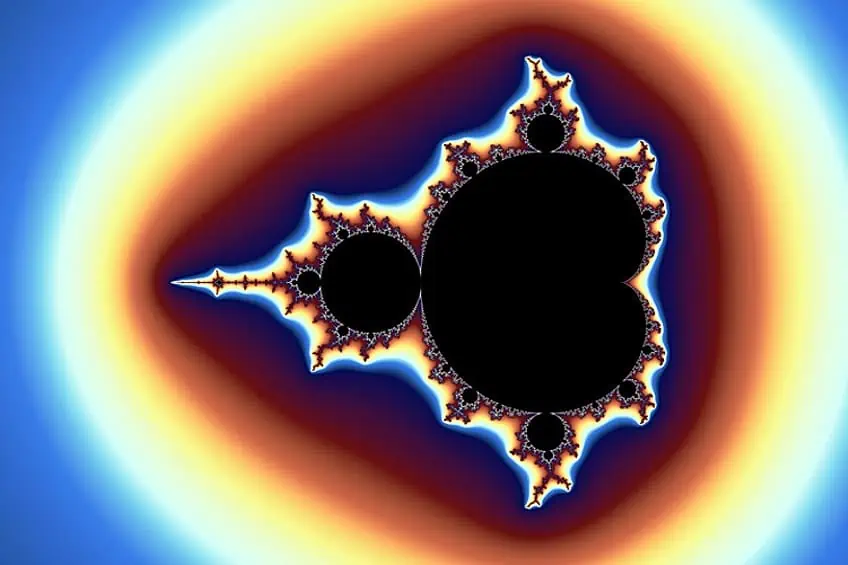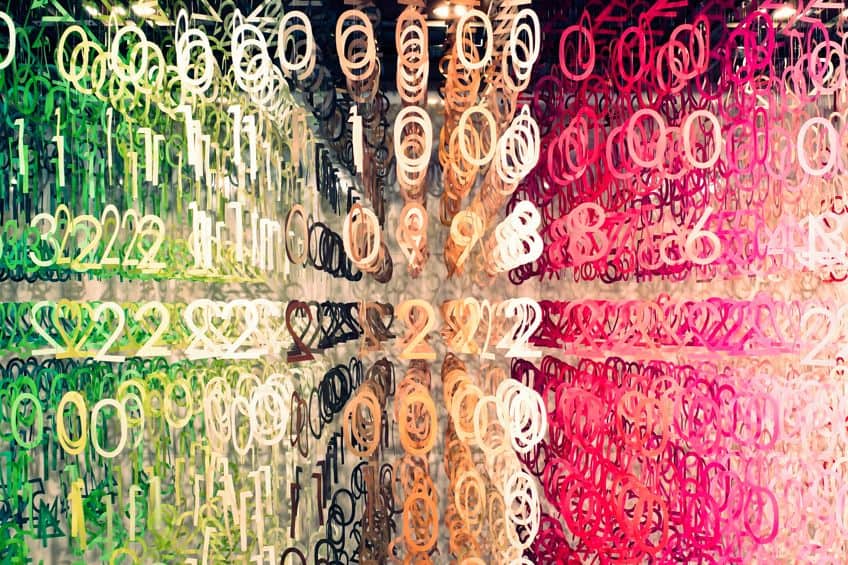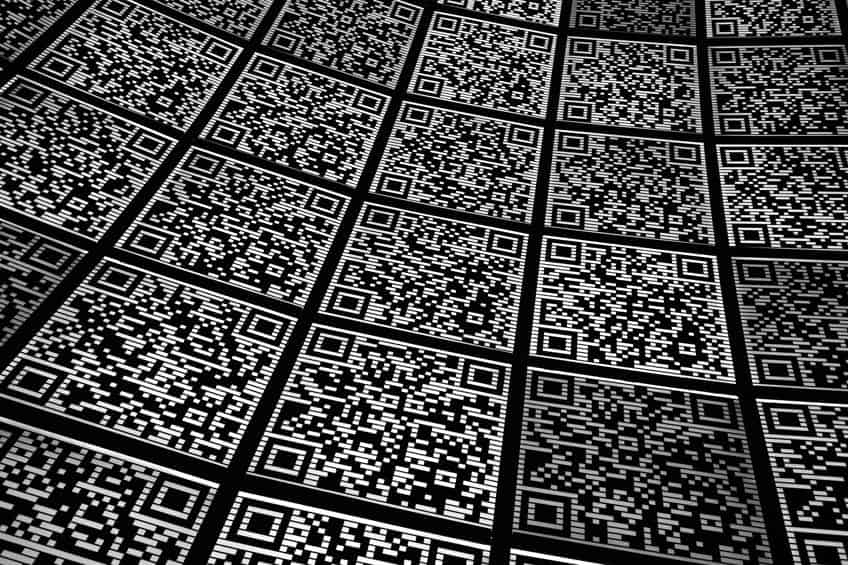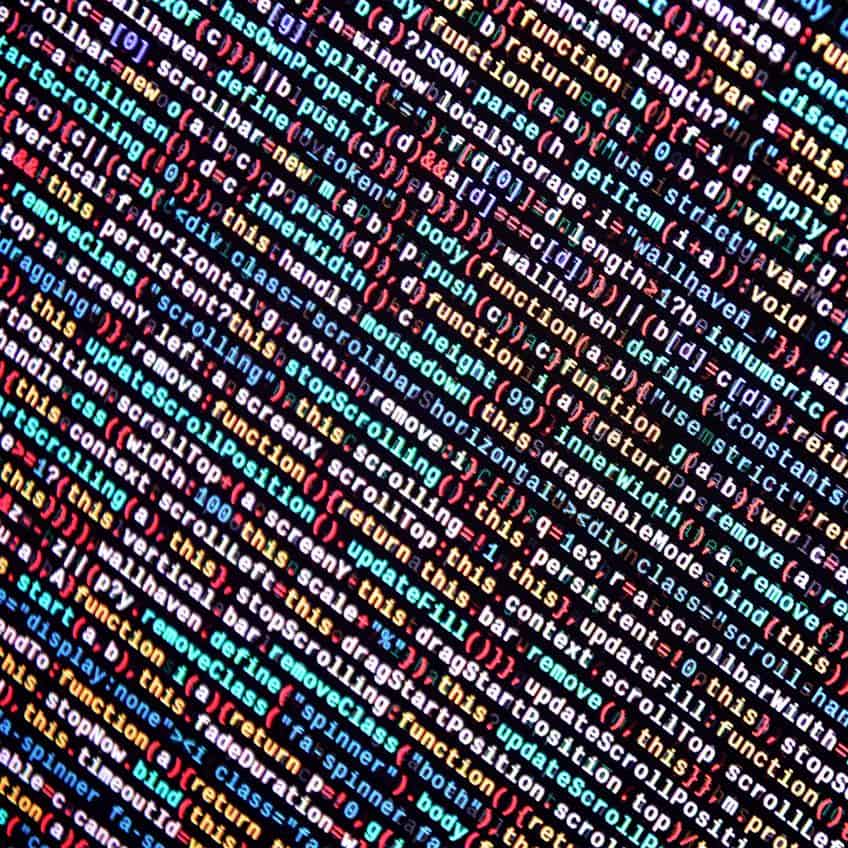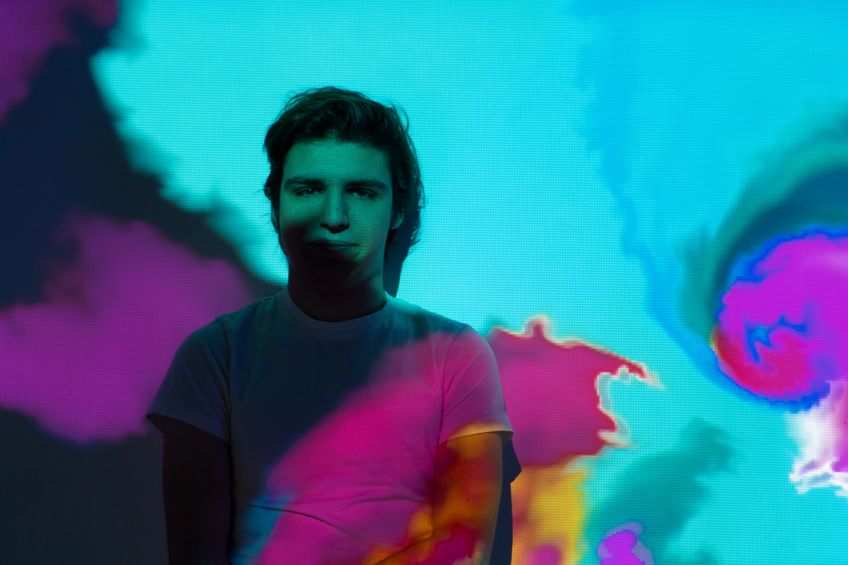Generative Art – When Algorithms Become Artists
Ever heard of code art or autonomous art? Today, many useful digital tools can aid artists in creating works that inspire innovation in the digital space. Generative art is one such art form that goes by many names and which many people are still wrapping their minds around. There have also been many critical debates around generative art that make the medium seem almost removed from its connection with the artist and its concerns with authorship. In this article, we will explore the world of generative art, including what the art form entails, the history and origin of generative art, as well as a few interesting examples of generative art that may inspire you to dive deeper!
What Is Generative Art?
You may have encountered the term “generative” when looking at digital art or on the news through artists like Malik Afegbua or Matt DesLauriers but what is generative art, and what are the most fascinating parts about this art form? Generative art involves the use of computer-generated software and tools that rely on autonomous systems, are considered non-human or artificial, and are strongly associated with computer art.
It is key to understand that generative art is an umbrella term for artwork produced via robotics, synthetic media, mechanics, data mapping, algorithmic artificial intelligence, and many other mediums and tools that release complete control from the artist.
Tracing the History of Generative Art
One can trace the origins of generative art to the 20th century with the development of computer technologies and the use of analog computers by artists like Vera Molnar and John Whitney to create algorithmic art. The integration of computers in art marked a turning point in art and its understanding of medium and creation, seen through the increased reliance on technology to provide creative alternatives to artists. The 1960s and 1970s saw a period in art that also introduced mathematics and algorithms as key tools to inform the outcomes of generative art and the digital tools used to make them. So, what makes generative art “generative”? Since the medium encompasses many tools and techniques, we will discuss the main principles and techniques of generative art so that you can have a basic understanding of the art form.
One of the main ideas behind generative art is that it relies on a guideline or set of instructions defined by algorithms and pre-set input data that enables the digital tools to produce visual images according to the artist’s instructions.
Hardware technologies have become crucial to the development of generative art. Hardware technologies include tools like projectors and LED displays that help artists communicate their artworks to people in physical spaces. The behavior of generative systems to “react” or inform their behavior is also shaped by microcontrollers. Microcontrollers enable artists to capture data or control the behavior of generative systems. So, how can we trace the trajectory of generative art and its reliance on technology? If one examines the art movements of the 20th century, one will notice similarities in movements like Futurism, Dada, and Constructivism, which express a fascination with the machine age and technology.
One can think of generative art as a combination of principles from these movements. Particularly the concept of randomness in Dada art sticks out like a sore thumb and was conceived as early as 1916. In many ways, 20th-century modern art movements and their visual languages provided the foundation for contemporary generative art languages that were merged with technology and “the machine” to produce art that both promotes and removes autonomy to a degree. Artists of the 60s and 70s kickstarted early forms of generative art using room-sized computation machines that merged the fields of computer science and art. Artists such as Lillian Schwartz were among the first modern artists to exhibit their digital work as fine art.
In 1996, organizations like Rhizome were established as an email list, where artists interested in new media and language shared their resources and contributed to the development of generative art.
One of the terms used to describe generative art was “artificial life” and “emergence”, which saw authors like Simon Biggs argue for “an avoidance of the concept of the ‘artificial author'”. The concept of the artificial author suggests that the computer replaces the role of the human author, which is a topic very much relevant to generative artists and authorship today. With the expansion of technology and its accessibility across parts of the world, generative art started to gain more popularity, while simultaneously exciting and angering art critics. Computer programs like Design by Numbers and Processing were developed in the late 1990s to enable artists to use code in visual art. Such developments aided the spread of generative art.
One of the breakthroughs of the 21st century occurred in 2014 with the release of artificial intelligence, which has become increasingly accessible today. Today, generative art also encompasses the field of artificial intelligence or AI-produced art with generative adversarial networks (GANs) that are created to “think like a human” and have been successful in the production of generative art with analog tools.
Techniques and Concepts Used in Generative Art
Generative art techniques involve a variety and sometimes a mixture of various methods and approaches to creating generative art. Below, we will discuss some of the most common techniques of generative art that will aid in your understanding of this art form and its “mediums”.
Randomness
In art history, randomness has been interlinked with notions of chance and fate, which have manifested themselves in movements such as Dada and ancient Athenian devices like the kleroterion. For centuries, people have attempted to achieve “randomness” in art, which was also scientifically explored by 20th-century computer scientists who noticed that the introduction of randomness in computations was, in fact, effective in improving algorithms.
Fields such as algorithmic information theory, probability, and statistics can also be explored to better understand the importance of randomness, sequences, and order in the world.
Artists like Jared Tarbell suggest that, as a creator, when you define a system where things can occur at random, one may be surprised by the outcome. He also speaks on physical art forms like contact improvisation in dance, of which performances proved impossible to replicate. By pointing the system in the direction of an end field rather than a specific goal, you introduce a randomness factor.
Feedback Loops
Feedback loops can be produced when an artist controls certain aspects of the work while allowing for some areas to be randomized. These feedback loops occur when an artist constantly edits or “tweaks” a system to bring about different results. Artists can create artworks that are more visually pleasing or cater to their desired visual goals.
Genetic Algorithms
Genetic algorithms are identified as a generic search method that can be used across a wide variety of fields. The technique is employed in computational optimization and is led by the concepts of genetics and natural selection. This technique mimics the process of evolution to resolve complex problems. One can understand genetic algorithms in comparison to the uses of machine learning. Machine learning can be used to attempt to create solutions to an issue using an example or data, however, genetic algorithms can be used in artificial intelligence to search a space of possible solutions and locate a solution that solves the issue.
Examples of this in art can be explored in procedural paintings produced on Unity 3D.
Chaos Theory
Chaos theory is an important scientific development of the 20th century that studies the development of dynamical systems, also understood as systems with states that are specified by a set of variables and contain a behavior outlined by predefined rules. Chaos theory analyzes these dynamical systems over large time scales and categorizes them as non-chaotic or chaotic. When applied to AI models, chaos theory can help these models respond to small changes in input data and create more accurate predictions. Algorithms that are chaos-based are used to improve neural network architectures and training processes. Chaos theory is also described by its principles, which suggest that seemingly visible and complex systems contain inherent patterns, constant feedback loops, and interconnectedness. While we have not covered all concepts and techniques, below is a list of other generative art concepts and techniques used include:
- Recursion
- Noise functions
- Delaunay triangulation
- L-systems
- Markov chains
- Neural networks
Important Developments in Generative Art
Generative art is one such form of art that is constantly evolving based on the different contributions made to the tools and technologies that enable generative art production. While you may be familiar with a few artificially intelligent tools, below, we will take a look at some of the few important developments that aid the development of generative art.
Open-Source Data Sets
One of the most useful developments in generative art is the increase of open-source datasets, which are publicly available sets of data that have no restrictions on their distribution or usage. These can be used by data scientists or generative artists who use computational methods to create new artworks or tools from the raw data. Open-source data sets are usually issued under open licenses, which enables people to freely access and contribute to the data set. Examples of these sets include Kaggle and Google Open Images data set, which provides artists with access to a wide range of images, sounds, and artworks.
Procedural Modeling
When researching generative art, you may come across the term procedural modeling, which is an umbrella term that encompasses several computer graphic techniques to produce 3D models and textures from sets of rules. A few procedural modeling techniques include fractals, L-systems, and generative modeling, which apply algorithms for creating scenes.
Through developments in procedural modeling, costs to create assets such as images and videos are being slashed since more time is allocated to “defining a range of possible outcomes”.
Evolutionary Algorithms
This type of artificial intelligence-based algorithm is based on the behaviors of living things and uses the mechanisms associated with biological evolution to encode the fundamental processes of nature into art-making processes. This enables artists to leverage data from the past and use it to create new artworks. Evolutionary algorithms rely on the patterns and behaviors witnessed in biological processes such as reproduction, selection, recombination, and mutation. The field of evolutionary computing was established in the 1950s and is often thought of in conjunction with the term “genetic algorithms”.

Contemporary Generative Art
The world of contemporary visual art is growing ever more complex in terms of the mediums that are available to artists in the digital space. Generative art is a transformative medium that probes into existing notions of artistic creation, especially toward the mediums we are used to learning in academic settings. Unlike conventional art forms, generative art uses algorithms and computational processes to produce unique visual outputs, which mark a shift from manual methods of production to algorithmic generation. This does not mean that the human is entirely removed from controlling the medium, however, this means that more concerns around authorship are presented and less control is granted to the physicality of the artwork since most generative artworks exist digitally.
The importance of paying attention to generative art rests in the symbiotic relationship we share with technological advancements.
As we continue to witness the many developments in artificial intelligence and computational capabilities, artists are required to delve deeper into acquiring more knowledge about such mediums. One must also acknowledge the relationships between artists and technology, such that there is an almost inevitable ground of understanding that contemporary art is evolving, and so must our understanding of it shift too.
For those keen to explore the complex realm of generative art, there are numerous resources available for self-guided exploration. One can search for platforms, courses, forums, and communities to obtain additional information and follow tutorials to empower oneself. Creative coding workshops are one such educational initiative in which artists can invest time to acquire hands-on experience with coding platforms and begin to experiment with generative art. There are also a variety of non-code platforms and tools that artists can play with to learn more about how these algorithms work. These include platforms like Async Art, Bueno Generator, and NFTs2Me, which are generally applied in the field of NFTs.
Other AI art generators that you can try out include Midjourney, OpenArt, DALL-E, Artbreeder, and Craiyon among many other useful generative tools.
AI Art Generators vs. Generative Art
As mentioned above, there are many useful platforms and tools to explore generative art. Artificial intelligence-generated art is categorized under the broader umbrella term of “generative art”, which means that these generators do not require one to control the coding of the algorithm. However, AI art generators like DALL-E and BigGAN rely on different models to render images from input data, given by the artist. AI art generators rely on machine learning, data sets, and powerful graphics cards among other things to create an image that best matches your input data, or text, as found in text-to-image generators.
Such AI art generators are dependent on the data they are trained in and the size of the data, which employ different models and are trained for different purposes.
Such models in AI art-generating platforms include generative adversarial networks and diffusion models. Generative adversarial networks include platforms like StyleGAN, VQGAN-CLIP, and BigGAN, while platforms that rely on diffusion models include Midjourney and DALL-E 2, which use a random field of noise, edited into a series of steps to match their understanding of the input data. Some of the free AI art generators you can try include Bing Image Creator, DreamStudio, OpenArt, Leap AI, getimg.ai, and Stablecog.
Examples of Generative Art
Now that you have a general understanding of what generative art is, you can explore our selection of generative art examples that will help you grasp the different kinds of visuals found in generative art.
Rhizome Logo (2001) by Markus Weisbeck and Frank Hauschild
| Artist Name | Markus Weisbeck (1965 – Present) and Frank Hauschild (n.d.) |
| Date | 2001 |
| Medium | Generative art |
| Dimensions (cm) | Unavailable |
| Where It Is Housed | Rhizome, New York City, United States |
This famous Rhizome logo was first released in 2001, which was long associated with a starburst formation. The logo was created by Markus Weisbeck and Frank Hauschild as a dynamic that marked one of the world’s first generative logos and classical examples of early generative art. The logo is generated using the last four IP addresses that visited the Rhizome website.
Muqarna Mutation (2019) by Michael Hansmeyer
| Artist Name | Michael Hansmeyer (1973 – Present) |
| Date | 2019 |
| Medium | Generative design |
| Dimensions (cm) | Unavailable |
| Where It Is Housed | Mori Art Museum, Tokyo, Japan |
Specializing in computational architecture, renowned architect Michael Hansmeyer is among the most talented contemporary designers to date. Hansmeyer uses generative design to create objects and models that allow him to explore “happy accidents” through artificial means. Hansmeyer elaborated on his process, stating that while the processes are deterministic, the outcome of his designs is unforeseeable. Muqarna Mutation was based on the 11th-century structural designs of the Seljuk dynasty Muqarnas, which were regarded as “elements of transition between a square floor plan and the circular base of a dome”.
These transitions contained several overlapping and stacked horizontal layers, which over time, became increasingly articulated in its connecting layers, resulting in the muqarnas becoming more sculptural.
Hansmeyer’s algorithmic process was based on the ceiling designs of the muqarnas and a selective subdivision algorithm to generate the art and fine-tune the designs. Hansmeyer took his creativity to the next level at the Mori Art Museum in Tokyo in 2019, when he was commissioned to create Muqarna Mutation. This project was a robotically fabricated and algorithmically designed muqarnas that was installed in the central exhibition room. His project addressed the role of computation and robotic fabrication in the fourth industrial revolution, which can be used to enhance the future of rule-based geometric art. Hansmeyer’s fascinating approach to generative design and architecture, and its spillage into sculptural installation in visual art is one that you are invited to explore further on his website.
Elders Series (2023) by Malik Afegbua
| Artist Name | Malik Afegbua (n.d.) |
| Date | 2023 |
| Medium | Generative art |
| Dimensions (cm) | Unavailable |
| Where It Is Housed | Artist’s collection |
Nigerian filmmaker and generative artist Malik Afegbua is among the leading contemporary generative artists of the current era. Early in 2023, Afegbua released a series of images presenting elderly people walking the runway using the AI platform Midjourney. The Elders series gained popularity throughout the year and brought more recognition to the world of generative art and the different kinds of platforms and tools artists can use to create generative artwork. Afegbua’s images were presented as a rejection of ageism crafted by the generative artist to reimagine marginalized members of society in contexts where they are usually excluded or underrepresented.
Afegbua was also commended by Ruth Carter, the globally renowned costume designer behind Black Panther during the Africa Fashion Week in Amsterdam, when his work was brought to life on the runway, fusing Nigerian fashion with Afro-futurism. Midjourney is recognized as a widely used AI generative art platform that relies on images in its algorithm to create art. The platform is also reliant on a diffusion model, which generates images based on input text. It is useful to think of Midjourney as one platform or tool that uses artificial intelligence, the latter of which falls under code-based art, also known as generative art.
Infinite Regeneration (2023) by Jared Tarbell
| Artist Name | Jared S. Tarbell (1973 – Present) |
| Date | 2023 |
| Medium | Fine Art Print on Hahnemühle William Turner |
| Dimensions (cm) | 31 x 51 |
| Where It Is Housed | Private collections |
Jared Tarbell is one of the world’s most famous generative artists, whose unique prints and NFTs are created using generative tools. One of the core concepts from Tarbell’s work is his view of simplicity, as something that is composed of more complexity than meets the eye. Tarbell was among the first artists to embrace generative art since the 2000s and has since sold many of his works, still regarded as “timeless”. Tarbell, who prefers to remain as private as possible, described his early views of art as emerging from his studies in mathematics and computer science, which inspired him to find beauty in computation. Tarbell himself stated that he believes there to be very spiritual and mysterious elements to the world, despite its complexity.
Tarbell began programming at the age of 14 and went on to create the game known as Atomic Tetris.
He then studied computer science and discovered his passion for creating video games. Tarbell was also inspired by Edward Tufte, whose concept of small multiples informed his approach to creating more beautiful outputs when writing programs. Tarbell’s journey as an artist began in 2004, when he would create prints of his work to sell from Complexification.net. For accessibility to generative art, Tarbell also stressed the importance of those interested in the art form to understand the logic or semantics behind programming, such that one can access a deeper appreciation for generative art.
The artist described Infinite Regeneration as “100,000 particles suspended in a multidimensional noise field, where all particles begin life on a shared horizon”. He further stated that “each particle, a movement, was simulated into the future until a single image was captured. This project began as a performance optimizer and eventually became a tool to contemplate life and death.”
Generative Art and Ethics
Now that you have an idea about the different kinds of visual languages that generative art can produce, we can now dive into some of the most interesting topics surrounding ethics in generative art. Today, many compelling issues concerning generative art, including the omnipresent role of algorithms, as well as the issues of authorship and ownership around generative art. By now you would have noticed that generative art is unlike any other traditional medium or process since it relies quite heavily on systems and algorithms to produce creative artworks while challenging conventional ideas about authorship.
In this way, there are many questions that one can ask about the ownership and control over an artwork.
One of the most prominent questions is “Does the artwork belong to the algorithm or is it the artist who is the true creator behind the artwork?”. The web of ethics is further expanded when questions around reproduction rights and distribution in generative art are brought to the surface. It is important to grasp that the essence of generative art is rooted in the artist’s control over algorithms, which varies to different degrees across the different generative art tools and techniques. In some ways, one can also contemplate the significance of the artist and the potential dehumanization of art in broadening the mediums that we have access to create. Generative art is often rooted so heavily in technology that it may dehumanize the process of creation, however, one must also ask, does artwork production need to remain confined to its human involvement to qualify as art?

In addition to these critical questions, it is also important to acknowledge the role that existing data sets and materials used in these algorithmic systems contribute to the output of art and its mirror on societal biases from the past. This remains one of the most relevant and necessary conversations that most generative artists need to engage in since the discourse of generative art ethics is pivotal to transforming our potential for correcting the kinds of data that are fed into these technologies.
There are many different aspects to generative art that one can unpack in terms of the crucial questions that it asks about the role of artists and our engagement with technology. From ethical debates to the evolution of mediums that enable us to produce work that transcends the digital space, generative art offers a large playing field from which we can interact with these topics. While we have not covered all the techniques and tools to create generative art, we hope that this introduction to generative art will spark your interest in diving deeper into the subject!
Frequently Asked Questions
What Is Generative Art?
The art form known as generative art refers to any artwork created using an autonomous system. These systems are usually non-human and can function independently to produce an artwork that would be directed using the instructions given by an artist. Generative artworks rely on predetermined systems that also integrate elements of randomness and chance. These types of artworks are usually computer-based and rely on a variety of tools and technologies. Generative art encompasses any code-based system of producing art, including artificial intelligence generative art platforms.
What Are Other Terms for Generative Art?
Some of the popular terms for generative art also include the term computer art, which has been used interchangeably with generative art since the earliest developments of the art form. The term generative computergrafik was also used in 1965 and was defined earlier by Max Bense in the 1960s. Bense was a German philosopher, who taught artists like Frieder Nake and Georg Nees on topics such as generative aesthetics.
Is AI-Generated Art the Same As Generative Art?
In short, no, artificial intelligence-generated art differs from generative art since the latter is an umbrella term, which encompasses artificial intelligence and code-based systems. Artificial intelligence-generated art, such as text-to-image generation platforms, draws information from existing data sets using crawling methods. These algorithms identify patterns and create possible outcomes. On the other hand, generative art is created with code and is usually customized by the artist. The artist constructs a series of traits and inputs the data into the algorithm, which then generates various unique outcomes. This is an approach often seen in profile image NFT collections.
Who Were the First Generative Artists?
Among the many early generative artists of the 1950s and 1960s are Georg Nees, A. Michael Noll, Harold Cohen, Manfred Mohr, Sol LeWitt, Vera Molnár, John Whitney, and Frieder Nake, among many others.
Which Programming Language Do You Use in Generative Art?
In generative art, there are various programming languages one can learn to create projects. While you do not need to learn code to use no-code generative tools, other languages like Python, Javascript, or C++ will help you learn more about how you can create projects from scratch and create generative art that is suited to the pool of outcomes you want to achieve.
Jordan Anthony is a Cape Town-based film photographer, curator, and arts writer. She holds a Bachelor of Art in Fine Arts from the University of the Witwatersrand, Johannesburg, where she explored themes like healing, identity, dreams, and intuitive creation in her Contemporary art practice. Jordan has collaborated with various local art institutions, including the KZNSA Gallery in Durban, the Turbine Art Fair, and the Wits Art Museum. Her photography focuses on abstract color manipulations, portraiture, candid shots, and urban landscapes. She’s intrigued by philosophy, memory, and esotericism, drawing inspiration from Surrealism, Fluxus, and ancient civilizations, as well as childhood influences and found objects. Jordan is working for artfilemagazine since 2022 and writes blog posts about art history and photography.
Learn more about Jordan Anthony and about us.
Cite this Article
Jordan, Anthony, “Generative Art – When Algorithms Become Artists.” artfilemagazine – Your Online Art Source. January 12, 2024. URL: https://artfilemagazine.com/generative-art/
Anthony, J. (2024, 12 January). Generative Art – When Algorithms Become Artists. artfilemagazine – Your Online Art Source. https://artfilemagazine.com/generative-art/
Anthony, Jordan. “Generative Art – When Algorithms Become Artists.” artfilemagazine – Your Online Art Source, January 12, 2024. https://artfilemagazine.com/generative-art/.


